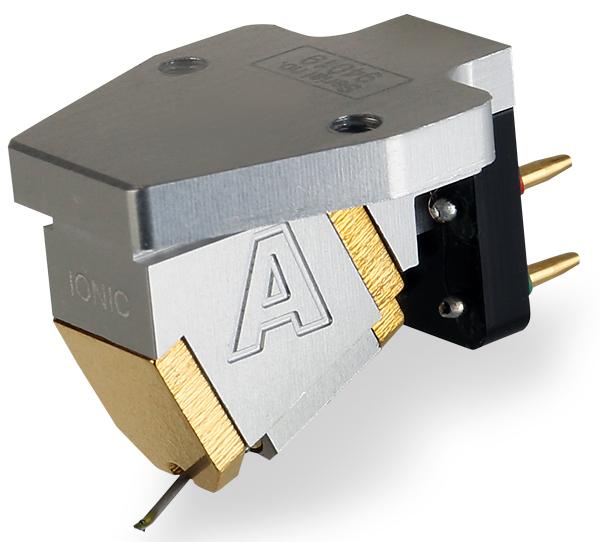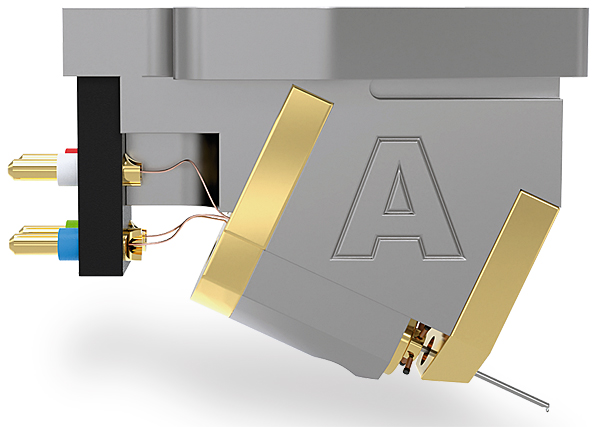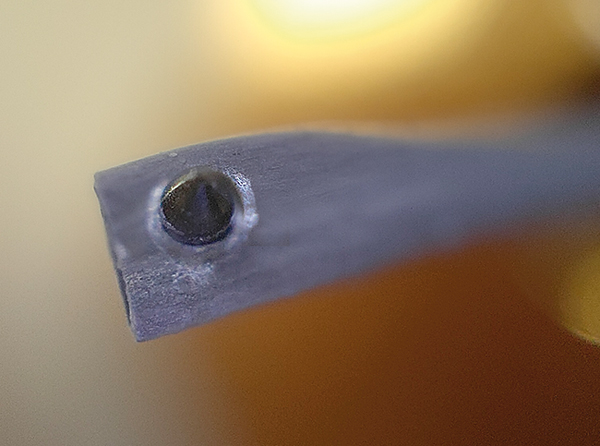AVID Ionic Cartridge

 The foundation of AVID's MC pick-up range, beneath the Ruby and Boron, is the Ionic (not the 'Alloy'!), and featuring more than a little artisan wizardry in its construction
The foundation of AVID's MC pick-up range, beneath the Ruby and Boron, is the Ionic (not the 'Alloy'!), and featuring more than a little artisan wizardry in its construction
No rest for the wicked, I feared, as PM assigned me another AVID MC cartridge. But I worried needlessly, thinking I might be reduced to comparing cantilevers once more. Not so. The dynamic was different here because the time had arrived to deal with the entry-level model in the Brit brand's range. Both stylus and cantilever differ from those in its siblings, the £6000 Reference Ruby [HFN Nov '20] and £4000 Boron [HFN Apr '21], so the £2000 Ionic blazes its own trail despite all three sharing the same magnet, coils and body design.
As we've reviewed them in descending order, this might have meant lowering expectations with each step but the results may surprise you, depending on your musical proclivities. AVID, by design or accident, has managed the trick of producing three similar MCs spaced £2000 apart, each ascending in sonic refinement, but each also in possession of its own personality. Think of three brothers or sisters with shared DNA, but who exhibit individualistic traits, like Sonny, Michael and Fredo Corleone.

Unavoidable in this context, though I want to skirt the thorny topic of price, is the seeming irony of calling a two-grand cartridge 'entry-level'. So let's get this over with right now: when astounding cartridges can be acquired for under £500, or even £200, considering those costing four figures and above means adopting the same mindset as when shopping in other luxury fields. It's like choosing between a £100k Mercedes-Benz G-Class instead of a £10k Dacia Duster, both of which are ostensibly SUVs.
Local Hero
Even at this price point, the Ionic is positioned in a tough, crowded, overly competitive segment of the moving-coil market. There are undeniable gems from Sumiko, EAT, Denon, Audio-Technica, MoFi, Ortofon and dozens of others in the £1500-£2500 bracket. What AVID brings to the table, should you prefer to buy local, is a UK brand with decades of experience producing record decks of indisputably superlative construction, dead-simple installation and – you'll be delighted to know – a specific quality that will knock you out if you favour rock, brassy and bold big band sounds, huge classical works or other genres that benefit from real punch. Plus the small, intimate stuff, too.
What might confuse you, however, is the anticipated relationship between the Ionic and its costlier siblings, aside from the obvious gains in absolute refinement. You are all probably seasoned listeners, so your conditioning rightly creates expectations as one moves up the ladder, eg, from a 2x50W integrated amplifier to 200W monoblocks.

Yet the Ionic doesn't quite follow the implied positioning within the AVID family – if anything, it might be the sleeper of the bunch. I had a discussion with AVID's Conrad Mas about the voicing and positioning of all three, and he conceded that, yes, while the Boron is easier to listen to than the Ruby, the most concrete differences to him concerned soundstage scale. The Ruby is widely majestic, the Boron slightly narrower-sounding, the Ionic as deep, but narrower still. Hmm.
Keeping Track
How to prepare you for these revelations? From the outset, you know the Ionic's aluminium cantilever and elliptical stylus cannot match the tracking ability (nor the attack) of the Boron and Ruby's eponymous materials, while the dearer models' Micro Ridge styli deliver better tracing, certainly over the test tracks I use. But the Ionic hardly struggled, and my notes tell me it may even have the edge in transient attack, if nowhere near the absolute speed and precision, of the Ruby.
Like its red and black siblings, the silver-grey Ionic has a narrow, parallel-sided 'chassis' which is supremely simple to line up with your tonearm or headshell. The exposed cantilever, while agitating nervous types such as I, is in full view and its benefits are much appreciated when setting both VTA and overhang, as well as when cueing.
AVID provides a large slide-on stylus cover to protect this naked assembly when the Ionic is not in use, but note that it's not a tight fit. Hence why it ships with a tiny rubber band holding it in place.
![]() Iconic Ionic?
Iconic Ionic?
Naturally, the recommended 2g downforce and 100ohm loading suits the cartridge, but the Ionic absolutely responds to experimentation with the latter. Yes, it's a bit tricky deciding whether or not lower or higher values actually sound better because the gain/output changes, but I still fiddled about with loading before settling on the century.


















































